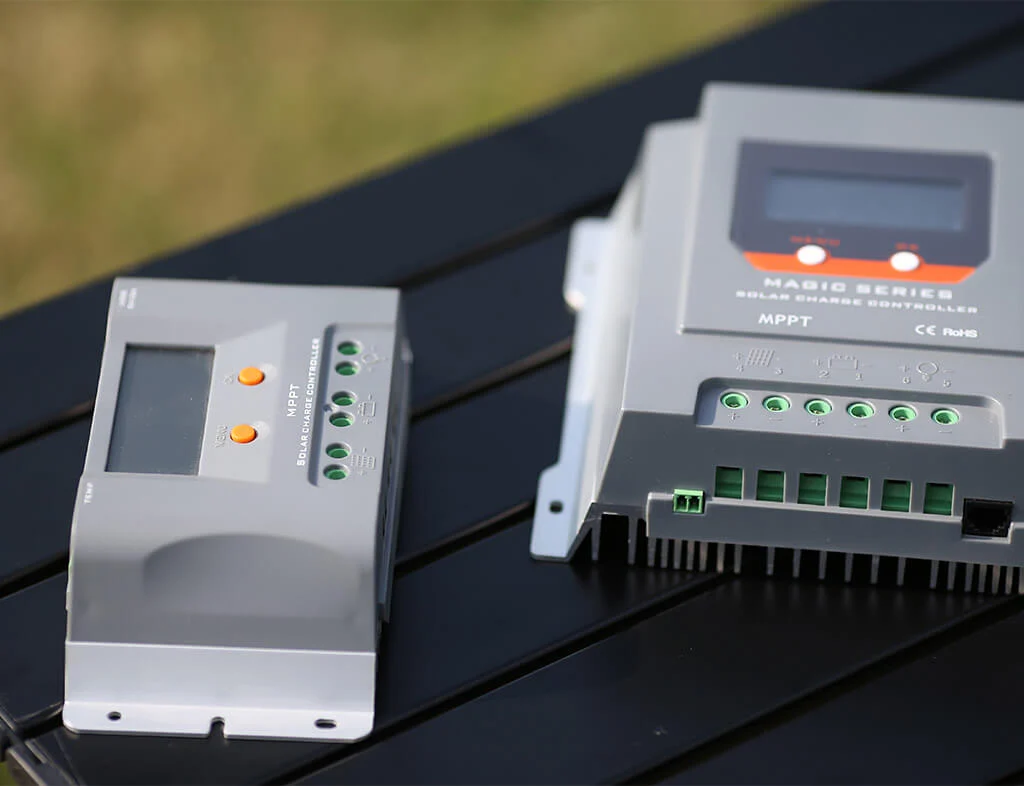A solar charge controller is an essential component in a solar power system that regulates the voltage and current coming from solar panels to the batteries. There are three main types of them.
Its main function is to ensure that the solar batteries are charged in a controlled and safe manner, preventing overcharging or undercharging, which can damage the batteries.
In more simple terms, it acts like a middleman between the solar panels and the batteries.
It looks at how full the battery is and then decides how much power to send from the solar panels to the battery. This helps the battery last longer and work better.
Some advanced controllers also offer features like displaying system information, data logging, and remote control.
Here’s a list of the functions of a solar charge controller.
- Current and Short-Circuit Safety: If the electric flow goes over 10A or there’s a short circuit, a fuse will blow. Just replace it to continue using it.
- Overvoltage Protection: If the voltage gets too high, the device shuts off on its own to avoid damage.
- Lightning Protection: If lightning hits, a special component keeps the controller safe.
- Reverse Battery Connection Protection: If the battery is hooked up backward, correct it and you’re good to go.
- Battery Open Circuit Protection: If the battery is wrongly connected but still gets some charge, the controller makes sure nothing is harmed. If there’s no charge, it won’t act.
- Anti-Overcharge: When the battery is overcharged, it stops charging. It will restart in a different mode when the voltage decreases.
- Over-Discharge Protection: If battery power is too low, the device cuts off output to save the battery. Power comes back when the battery is recharged.
- Self-Checking: The controller can check itself if conditions or errors cause issues, helping you know if it’s OK.
- Recovery interval: The controller waits between safety modes to keep things stable.
- Temperature Check: The controller looks at the battery temperature to ensure it works optimally.
- Light Control: Used mostly in automatic lights, the controller turns off when it’s bright and on when it’s dark.








